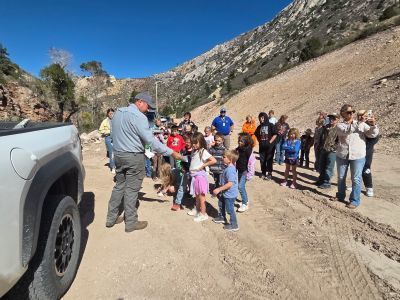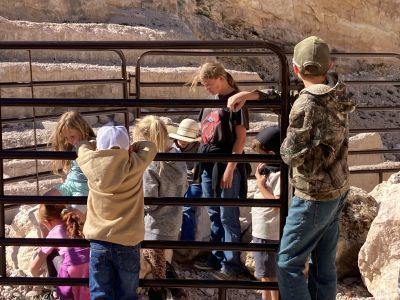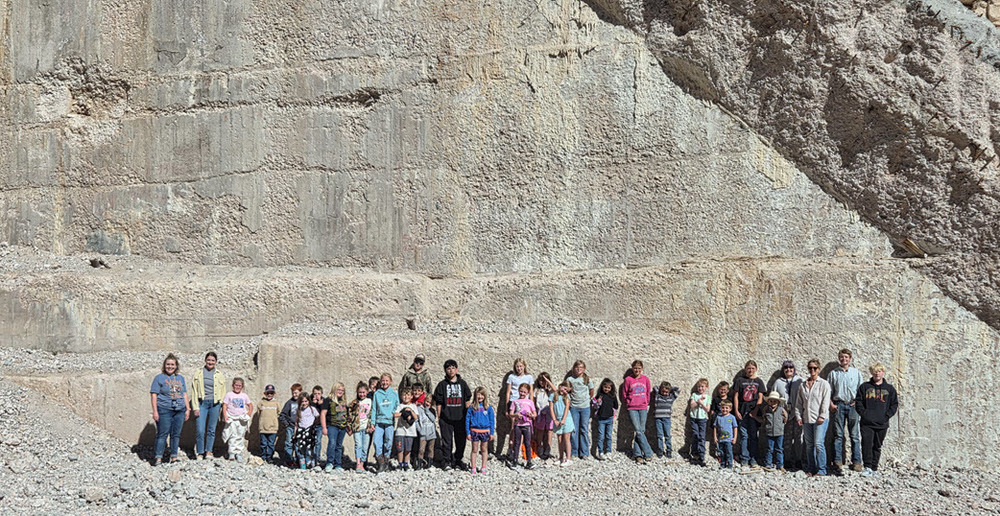From White School Teacher, Lindsay Falkenburg:
Last year, when working with the Science representatives from UW I was asked to read an article where the main question posed to the students was “What caused the town to flood?” I was inspired and thought it would be fun to do a project with the students based around the La Prele Dam. I began talking with Mrs. Shepard at Moss Agate School about this idea as the dam is in their (Moss Agate’s) “back yard.” We decided we wanted to create a unit that could be used K-8. We began building and creating! We wanted something we could use in our classrooms, both K-3 and 4-8, or if we ever needed it with all students K-8. We spent time this summer typing up ideas and a plan. I knew I wanted to create something meaningful for my students, a problem they could solve, while allowing them to lead their learning with my guidance.
We began our unit by creating a dam in the playground before the students arrived, using our hose to create a water backup problem. When the students arrived (or went out for recess), they noticed the problem and began discussing what was going on. During science, we took time to discuss what they had seen. Some of the students had a background knowledge of a dam and were able to put the vocabulary to the problem, while teaching others about what a dam is. We discussed how it could be helpful and hurtful to the area of the playground. We then started discussing how we could fix the problem. (side note: Luckily, the next day at White school it rained hard and the students were able to see our real life water problem and are now set out with how to fix it, discussing if a ditch or a dam would work better. This has changed our unit a little, as we will extend our learning at the end to discuss the fact that a drainage ditch would be better than a dam in our area.)
After discussing the dam issue on the playground, we asked the students to discuss where they might see dams in our area and what dams are used for. After some discussion, we had the students research different dams. Later, we put the students into groups and gave them a tote, asking them to create their own dam with only the things they can find outside. Students began building, testing, revising, and building some more, discussing what was working and what wasn’t. The students have really been enjoying hands-on exploration and building.
This led us to visit the La Prele Dam. On our visit, the students learned about the history of the dam, when it was built, when it started cracking, and what was done to address the cracks (the cracks were filled with epoxy, and the kids were able to see a piece of it). They learned about how the dam had been fixed or revised many times to keep it functioning. Then they learned about the newest set of cracks, which led them to decide to tear the dam down. They got to see a 3-D model of the new dam and made some guesses about the purpose of its parts. Being on site was a lot of fun and truly helped the kids envision how large the dam truly was!
We will now explore different ways a dam can crack with an experiment using freezing clay, and another using plants growing in plaster.
Once the students explore the different ways dams can crack, they will be able to build dams again using any materials they wish, e.g., concrete.
We are entertaining revisiting the dam this spring when they begin building, and/or having the students travel to Falkenburg’s ranch to put in dirt ditch dams.



